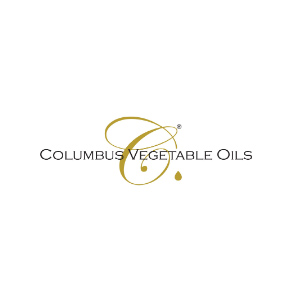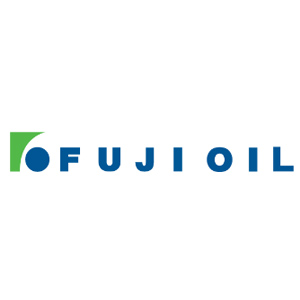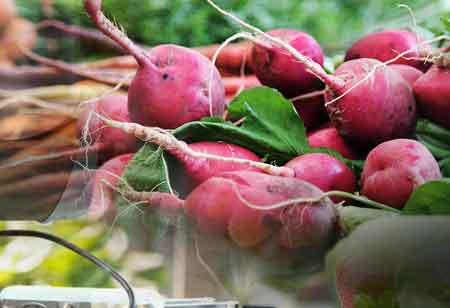\\\\ Top Oil & Fats Companies \\\\
\\\\\\\\ Top Oil & Fats Companies \\\\\\\\
-
Texana Brands
Texana Brands produces naturally infused olive oils using real ingredients like garlic, jalapeño, onion, mesquite wood and Italian herbs without any chemical flavorings. By owning its own harvesting company and selecting mild, high-quality oils, Texana ensures consistent flavor and quality in every bottle. Focused on transparency, U.S.-based sourcing, and small-batch craftsmanship, the company is redefining infused olive oil for home cooks and chefs.
-
Atlas Olive Oil
Atlas Olive Oil is a fifth-generation Moroccan company producing ultra-premium, single-estate olive oils and health products. Known for quality, sustainability, and high polyphenol content, it blends tradition with science-backed wellness innovation.
-
Colony Products
Colony Products has been family run for over 75 years, giving their customers unmatched expertise in manufacturing and distributing release agents, and bulk oils for baking, food processing, cosmetics, pharmaceuticals and industrial applications. Colony Products offers the finest quality in Organic, Non GMO, Plant Based, Essential and Specialty Oils. Colony Products offer custom blending to meet their customers specific needs and has extensive product and regulatory knowledge to help each customer meet their production goals.
-
Arista Industries
Arista Industries provides a broad range of oils for industries such as food, cosmetics, pharmaceuticals and industrial applications. Their product portfolio includes marine, vegetable, essential and specialty oils, supported by stringent quality control and tailored services. They focus on meeting customer specifications with customized formulations, blending capabilities and technical expertise.
-
CVOils
CVOils specializes in the supply and distribution of bulk vegetable oils and fats for food, personal care and industrial applications. They offer a wide range of products, including organic, non-GMO and specialty oils, supported by efficient logistics, quality assurance and customized solutions to meet specific customer and industry needs.
-
Fuji Oil USA
Fuji Oil USA develops and manufactures specialty plant-based food ingredients, including oils, fats, cocoa-based products and functional soy proteins. Serving diverse industries, they focus on innovation, sustainability and health-conscious solutions to meet evolving customer needs. Their expertise supports various applications, from confectionery to nutrition, offering customized formulations for optimal performance.
-
WHC Oils
WHC Oils supplies refined vegetable oils, specialty oils, animal fats and fatty acids for industries like pharmaceuticals, food, cosmetics, lubricants and industrial applications. With strict quality standards, FDA registration and certifications, WHC offers custom packaging and kosher options, ensuring reliable, high-purity ingredients for diverse manufacturing and formulation needs.
More in News
Ensuring Freshness Through Advanced Cold Chain Logistics
Friday, November 28, 2025
Fremont, CA: Fueled by rising demand, cold chain food logistics is rapidly evolving, powered by advanced technologies and sophisticated freight management solutions. Cold chain logistics tends to receive less attention than other forms of food logistics. However, it presents more significant challenges and risks, underscoring the necessity for distributors and all participants in the supply chain to refine their logistics strategies. Cold chain logistics is a distinct sector within food logistics that aims to ensure the secure transportation of perishable food items. This process guarantees that the products are kept at the appropriate temperature throughout each phase of the supply chain. This particular logistics sector necessitates meticulous planning, cutting-edge technology, precise management, and some of the most sophisticated packaging and refrigeration solutions available. An in-depth examination reveals the unique challenges faced by this industry, as well as the innovative technologies that are facilitating opportunities for growth on a global scale. The primary issue in transporting perishable food items is ensuring the safety and quality of the products throughout the shipping process. However, various factors complicate this task within cold chain logistics. They are: Condensation and Temperature Changes Due to Faulty Equipment: A prevalent issue encountered is essential equipment failure, even if only briefly. Fluctuations in temperature can lead to risks such as freezer burn, condensation, and damage to products. Sudden equipment malfunctions represent a significant concern within the logistics management framework due to the potential damage that can occur in minutes. The most effective strategy to mitigate these risks is to ensure the availability of backup support to monitor and maintain precise temperature levels consistently. Collaborating with reputable cold chain logistics firms, particularly those equipped with cutting-edge technology for product oversight, can provide valuable assistance. Human Errors: Errors in refrigerated logistics frequently stem from human oversight. Only highly skilled professionals should actively manage logistics. Inefficiencies in operations or inadequate equipment management can significantly increase the risk of food product damage. Training on appropriate handling techniques and best practices in cold product management is vital for addressing these issues. Furthermore, technological innovations that automate various tasks and processes may substantially support operational management. High Costs: Cold chain logistics requires significant capital investment, which entails substantial expenses for specialized equipment, refrigerated transportation, temperature monitoring systems, and energy usage. The upkeep of cold storage facilities and refrigerated vehicles, particularly those adhering to rigorous standards, can incur considerable costs. These elevated operational expenses may pose challenges for smaller enterprises, hindering their ability to offer competitive pricing, especially in low-margin sectors such as the food industry.
The Craft Kombucha Movement's Impact on Beverage Standards
Wednesday, November 26, 2025
Craft kombucha has experienced a remarkable journey, evolving from a niche health tonic discussed within wellness communities to a prominent, effervescent presence in conventional grocery establishments. This fermented tea, previously exclusive to homebrewers and health food aficionados, now serves as a foundational element within the rapidly expanding functional beverage sector. Its progression from marginal to mainstream status signifies not merely the triumph of a single product but also reflects a significant transformation in consumer awareness, preferences, and expectations concerning beverages. The Rise of the Conscious Consumer The mainstream acceptance of kombucha is fundamentally rooted in the evolving priorities of the contemporary consumer. Present-day shoppers exhibit heightened health consciousness and increased awareness of ingredients. A discernible collective shift is occurring, moving away from sugary, artificially flavored soft drinks and towards beverages that offer more than mere hydration or a fleeting taste sensation. This "conscious consumer" actively seeks products that align with a holistic wellness paradigm. Precisely at this juncture, kombucha asserts its prominence. As a naturally low-sugar alternative to conventional sodas, it immediately garners appeal from those seeking to mitigate their sugar intake. However, its appeal extends beyond this immediate benefit. The beverage is praised for its probiotic content, which comprises live cultures of beneficial bacteria and yeast produced during the fermentation process. With gut health emerging as a pivotal topic in mainstream wellness discussions, consumers are actively seeking out probiotic-rich foods and beverages to support their digestive microbiome. Kombucha offers a refreshing and accessible means to achieve this objective. It transcends the categorization of a mere drink; it is perceived as a proactive choice for one's well-being, a straightforward daily ritual that contributes to a healthier lifestyle. Demand is no longer exclusively for "less detrimental" options, but for "positively beneficial" ones —a paradigm shift that craft kombucha perfectly embodies. A Symphony of Flavor and Function While health benefits initially attracted consumers, the proliferation of diverse flavors and artisanal craftsmanship has significantly broadened its appeal. Early perceptions of kombucha often characterized it by a vinegary, acquired taste. However, the craft movement has fundamentally altered this perception, transforming the beverage into a medium for culinary innovation. Contemporary craft brewers demonstrate a masterful command of flavor, producing an extensive array of complex, nuanced, and exceptionally palatable varieties. They have advanced beyond the rudimentary sweetened tea base, infusing their brews with an imaginative selection of organic fruits, cold-pressed juices, aromatic botanicals, and exotic spices. Examples include ginger-lemon, lavender-chamomile, raspberry-mint, and even spicy chili-mango. This artisanal approach has elevated kombucha from a health tonic to a gourmet beverage. Its characteristic effervescence and tangy finish offer a satisfying and sophisticated alternative to both sugary sodas and plain water. This distinctive taste profile, coupled with its functional properties, constitutes a potent combination. Consumers derive the effervescent satisfaction of a carbonated drink without the attendant sugar crash, augmented by the benefits of probiotics and organic acids. It represents a beverage that obviates the need to compromise between gustatory pleasure and health, harmoniously uniting them within a single bottle. The Craft Brewing Renaissance The evolution of craft kombucha parallels the trajectory of the craft beer movement that preceded it. This shift signifies a departure from mass-produced, standardized commodities towards artisanal, superior-quality, and transparently manufactured goods. The designation "craft" transcends a mere marketing label; it denotes a steadfast adherence to traditional fermentation methodologies, premium constituents, and a meticulous, hands-on production approach. This underlying philosophy profoundly resonates with consumers who are increasingly skeptical of expansive, impersonal corporations. They seek authenticity and a tangible connection to the products they procure. The narrative underpinning craft kombucha—frequently stemming from a profound enthusiasm for fermentation and well-being—is as compelling as the beverage itself. The incorporation of organic teas, genuine fruit, and natural flavorings, combined with a protracted and meticulous fermentation process, yields a product perceived as both wholesome and of superior quality. Likewise, this resurgence has cultivated a sense of community and exploration. Analogous to individuals traversing local breweries in pursuit of their preferred India Pale Ale, consumers now derive pleasure from discovering nascent kombucha producers and distinctive flavor profiles. This phenomenon has transformed the beverage aisle into an arena for discernment, encouraging patrons to experiment with novel offerings and identify a brew that precisely aligns with their preferences. The influence of craft kombucha extends beyond its immediate market presence, actively restructuring the entire beverage category. It occupies a distinctive and adaptable position, blurring the distinctions between previously separate segments. It functions simultaneously as a health drink, a soda substitute, and a refined non-alcoholic option. For those seeking an afternoon revitalization, it provides a subtle energy boost derived from tea, without the associated jitters of coffee. In the evening, it serves as a complex and celebratory non-alcoholic alternative to wine or cocktails. Its inclusion in bars, restaurants, and cafes as a premium adult beverage underscores its elevated standing. It enables individuals abstaining from alcohol to participate in the social custom of consuming a special drink—one that is intriguing, flavorful, and unequivocally engaging. By establishing this multifaceted identity, kombucha has prompted innovation across the beverage manufacturing sector. It has elevated industry standards, compelling a shift towards cleaner ingredient labels, reduced sugar content, and the integration of functional benefits. Its success has paved the way for a new generation of functional beverages, encompassing sparkling probiotic waters and botanical-infused tonics, thereby fundamentally altering consumer expectations for cold drinks. What was once a fermented product has transitioned into a mainstream staple, a flavorful testament to the efficacy of a healthier, more conscientious approach to beverage consumption.
The Rise of Alternative Proteins for Better Health
Wednesday, November 26, 2025
FREMONT, CA: Alternative proteins, including plant-based options and cultured meat, are gaining popularity as sustainable and healthier alternatives to traditional animal-based proteins. It offers a range of benefits, including improved nutritional profiles, lower saturated fat content, a reduced risk of chronic diseases, and enhanced environmental sustainability. Below are the key advantages of alternative proteins, highlighting their potential to promote healthier diets and contribute to a more sustainable future. Nutritional Value Alternative proteins, such as plant-based proteins and cultured meats, deliver high-quality protein with an ideal amino acid profile. They provide essential nutrients, including vitamins, minerals, and antioxidants. These proteins can be as nutritionally robust as traditional animal-based proteins. Plant-based options often contain added nutrients like iron and calcium. The diverse nutrient profile supports health and wellness and offers a beneficial alternative to conventional meat products, making them viable for balanced diets and health maintenance. Reduced Saturated Fat Many alternative proteins, particularly plant-based ones, contain lower saturated fat levels than traditional animal proteins. Reduced saturated fat intake is associated with lower cholesterol levels and improved heart health. Lower saturated fat can also help reduce the risk of cardiovascular diseases. Alternative proteins provide a healthier option without compromising on protein quality. This reduction aligns with dietary guidelines recommending lower saturated fat consumption. Accordingly, they support better long-term heart health and lower fat content, which is advantageous for overall wellness. Lower Risk of Chronic Diseases Diets high in plant-based proteins decrease the risk of chronic diseases such as diabetes, hypertension, and certain cancers. This association is often due to higher fiber content and reduced levels of processed ingredients. Plant-based diets are rich in antioxidants and phytochemicals that contribute to disease prevention. Alternative proteins help mitigate risk factors associated with these conditions and support health by promoting a balanced, nutrient-dense diet. Lower intake of processed meats also reduces exposure to harmful additives and can improve long-term health outcomes. Allergy Management Alternative proteins offer suitable options for individuals with allergies or intolerances to common animal-based proteins. For example, pea and soy proteins are excellent substitutes for those with dairy or egg allergies. These proteins provide similar nutritional benefits without the allergenic components, allowing for dietary flexibility and inclusivity, which is particularly beneficial for individuals with specific dietary restrictions. Alternative proteins help prevent allergic reactions while maintaining nutritional intake, enabling people to enjoy a varied diet despite food sensitivities. Improved Digestibility Alternative proteins often have better digestibility compared to traditional animal proteins. Plant-based proteins and cultured meats can be easier on the digestive system, making them suitable for individuals with digestive issues or sensitivities. Improved digestibility can lead to better nutrient absorption and overall digestive health. These proteins generally cause fewer gastrointestinal disturbances and support comfortable and efficient digestion, contributing to an enhanced eating experience. Environmental Benefits Alternative proteins can positively impact environmental health, creating a more sustainable food system. Compared to traditional meat production, they typically require fewer resources, such as water and land. A reduced environmental footprint supports ecological balance and reduces greenhouse gas emissions, contributing to long-term environmental health. By choosing these proteins, individuals support efforts to mitigate climate change, foster a healthier planet, and promote a global well-being dietary future. Support for Healthy Weight Management Many alternative proteins are high in fiber and low in calories, which aids in healthy weight management, helps promote a feeling of fullness, and reduces calorie consumption. These proteins can support weight control by curbing, overeating, and managing appetite. They provide nutritious options without excess calories. The lower calorie density of these proteins can help maintain or achieve a healthy weight. Incorporating them into a balanced diet supports effective weight management strategies promoting health and wellness. Alternative proteins strongly support shifting towards a more sustainable and health-conscious food system. As research and innovation continue to advance, alternative proteins are poised to play an increasingly significant role in shaping a healthier, more sustainable food consumption future.
Comprehensive Overview of Emerging Trends in Nutraceuticals
Wednesday, November 26, 2025
FREMONT, CA: It evolves continuously because more food-sourced products are expanded into nutrition beyond merely being essential to health. Consumer preferences for diet improve health and prevent diseases. Keeping up-to-date with changes is necessary because this dynamic character of the market keeps introducing innovation and new trends in the nutraceutical industry. The sector is also moving toward personalized nutrition due to genomics and data analytics advancements. These solutions specifically cater to one's genetic profiles, lifestyle factors, and health conditions, thus targeting and delivering measures for health relief more effectively than one-size-fits-all product solutions. This reflects a broader move in the healthcare industry towards personalized medicine. Consumer acceptance has pushed the market for plant-based nutraceuticals towards sustainable and ethical consumption. Antioxidant activity and overall health support have seen an increase in ingredients such as turmeric, spirulina, and green tea extract. The next grower will happen in ingredients that are antioxidant- and anti-inflammatory-driven, such as turmeric, spirulina, and green tea extract. In particular, the traction of plant-based diets is increasing demand for plant-based nutraceuticals that support a plant-based lifestyle, including plant-based protein powders and algae-extracted omega-3s. Functional foods, synthetically designed with nutrients or bioactives, are growing in popularity in the nutraceutical industry. Probiotics are supplemented into various food matrices such as yogurt, beverages, or snack foods to enhance gut health. Fortified foods, including vitamins, minerals, or phytochemicals, are being developed to correct deficiency or promote wellness. Digital Health Technologies: Enabling the Consumer Interaction Transformation Towards Nutraceuticals. Wearable Health Trackers and Mobile App Technologies: Allows continuous tracking of health metrics, personalized feedback, everyday monitoring of nutrient intake, and guidance on personal goals related to nutraceutical treats. This gives informed advice concerning nutraceutical treats, enhancing consumer engagement for better data-driven health decisions. This integration enhances consumer engagement and personal health goals. One key trend relating to the nutraceutical industry is sustainability. Priorities are high on sustainable nutraceutical products that are environmentally friendly and focus on the new wave of consumer-set awareness concerning nature. Companies have adopted such practices to be sustainable, responsible for procuring their raw ingredients, using recyclable packages, and generally reducing their carbon footprints. Companies are also increasingly demanding transparency in their sourcing and production methods, and consumers are looking for products from companies that will align with their values in the future. The nutraceutical regulatory environment is developing; governments and authorities focus more on safety, efficacy, and quality issues. This leads to more guidelines and regulations to ward off false claims in product advertisements and protect the promises made by the products. It soothes consumers and calls for more investment in compliance and quality control for product safety and quality.
The Evolution of Functional Sparkling Water
Wednesday, November 26, 2025
For decades, the carbonated soft drink market was defined by a binary choice: sugar-laden indulgence or calorie-free artificiality. However, a modern consumer awakening has dismantled this dichotomy. This is no longer simply about hydration or flavor masking; it is about optimization. As the lines between food, medicine, and lifestyle blur, consumers are demanding beverages that work as hard as they do. The "effervescent revolution" is characterized by the infusion of high-efficacy ingredients—specifically probiotics for gut health, adaptogens for stress management, and targeted vitamins for systemic support. The Microbiome Boom: Probiotics and Gut Health Optimization The primary growth catalyst in the functional sparkling water category is the increasing global emphasis on digestive health. As consumer understanding of the human microbiome continues to expand, gut wellness is now widely associated with stronger immunity, improved mood balance, and overall vitality. Traditionally, probiotics were obtained from dairy products such as yoghurt or fermented beverages like kombucha. While effective, these formats come with limitations, including distinct sour flavour profiles and the perishability inherent to fermentation and dairy products. Advances in food science have enabled functional sparkling water to address these challenges by incorporating resilient, spore-forming probiotic strains such as Bacillus coagulans, which remain stable throughout carbonation and ambient storage without reliance on cold-chain distribution. The category is now progressing beyond fundamental probiotic inclusion toward more integrated symbiotic formulations that combine probiotics with prebiotic fibres to nourish beneficial bacteria. Ingredients such as chicory root, inulin from agave, and marshmallow root are increasingly used to achieve this balance. These components not only enhance functional value but also contribute to an appealing sensory experience by adding subtle sweetness and a fuller mouthfeel, supporting sugar reduction while elevating fiber content. Consumer interest is primarily driven by convenience and a desire to avoid supplement fatigue; many prefer to obtain digestive benefits from a refreshing beverage rather than a capsule. As a result, functional sparkling water has evolved from a simple hydration option into a daily wellness ritual, firmly establishing itself as a staple for routine digestive support. The "Calm" Economy: Adaptogens and the Sober Curious Movement The functional water market has expanded beyond physical wellness to include products designed to support mental well-being. In an environment often described as a “stress epidemic,” consumers are seeking beverages that promote relaxation, focus, and clarity without the drawbacks of high-caffeine energy drinks or alcoholic options. This shift has accelerated the adoption of adaptogens in sparkling water, introducing a new category of mood-modulating beverages. Adaptogens—non-toxic herbs and mushrooms known for their ability to help the body manage physical, chemical, and biological stressors—are being incorporated to deliver targeted cognitive and emotional benefits. Formulations in this segment increasingly address specific mental states. Ashwagandha and lemon balm are widely used to support stress reduction by helping regulate cortisol levels. Ingredients such as L-theanine, often combined with modest amounts of natural caffeine, and lion’s mane mushroom are positioned to enhance cognitive clarity and sustained focus. To boost mood and resilience, brands often rely on rhodiola rosea and ginseng to counter fatigue and support emotional balance. This trend aligns closely with the growing “sober curious” movement, as consumers seek sophisticated, non-alcoholic beverages that offer a subtle shift in mood or energy. Adaptogenic sparkling waters serve as a refined alternative to traditional evening drinks, providing a health-supportive ritual that complements modern lifestyles. Ultimately, this emerging category transforms a simple can of sparkling water into a tool for managing daily stress and supporting long-term mental well-being. Nutrient Density: The Next Generation of Vitamin Fortification The driving force behind the growth in the functional sparkling water segment is the evolution of vitamin fortification. Earlier, vitamin-enhanced beverages were often associated with high sugar content and minimal nutritional value, relying on synthetic additives to position them. The contemporary market, however, demands significantly higher standards. Functional sparkling water has emerged as a platform for delivering bioavailable, purpose-driven nutrients that address specific wellness objectives, including immune support, skin health, and physical recovery. This shift reflects a broader move away from generalized “multivitamin” blends toward highly targeted formulations that deliver measurable functional benefits. Immunity-focused products remain a key priority, featuring concentrated levels of Vitamin C, Zinc, and Elderberry in light, refreshing sparkling formats rather than traditional heavy juice bases. At the same time, the beauty-from-within category continues to expand, with beverages incorporating biotin, silica, and antioxidant-rich ingredients positioned as convenient, daily skin-support solutions. Likewise, hydration and recovery offerings are advancing beyond the legacy sports drink category. These formulations emphasize naturally aligned electrolytes such as Magnesium and Potassium, appealing to active consumers who favor clean, dye-free, and low-sweetness options. A notable industry-wide development is the rising preference for natural vitamin sourcing. As consumers become more knowledgeable, they increasingly seek ingredients derived from whole food origins—such as acerola cherry for Vitamin C—over synthetic alternatives. This expectation reinforces the importance of clean-label standards and challenges manufacturers to adopt sourcing and formulation practices that ensure both nutritional integrity and the crisp, refreshing profile that defines sparkling water. This represents a fundamental change in consumer philosophy: the expectation that every calorie and every sip should serve a purpose. The era of passive consumption has given way to an era of active nutrition. As the science of bioavailability improves and consumer knowledge deepens, this category will continue to fracture into highly specialised solutions—waters for sleep, waters for gaming focus, and waters for hormonal balance—cementing the beverage as a primary tool for personal health management.
The Renaissance of Giardiniera: Elevating Everyday Meals into Culinary Experiences
Tuesday, November 25, 2025
In the vast landscape of condiments, few items possess the sensory complexity and historical resilience of giardiniera. Once relegated to the back shelves of Italian delis or viewed strictly as a regional topping for wet beef sandwiches, this pickled vegetable medley—along with its pepper-centric cousins—is currently enjoying a profound renaissance. The industry is witnessing a decisive shift in how these products are conceptualized, packaged, and presented to the consumer. No longer just a garnish, giardiniera is being aggressively marketed as a versatile "flavor architect," capable of transforming mundane meals into gourmet experiences. Manufacturers are no longer competing solely for space in the pickle aisle; they are vying for the coveted status of a pantry staple, akin to olive oil or hot sauce. This shift is driven by a sophisticated understanding of modern palate fatigue and the consumer’s desire for high-impact, low-effort flavor boosters. By leveraging the inherent adaptability of peppers, celery, carrots, cauliflower, and olives, producers are successfully rewriting the narrative of what a condiment can achieve. The Expansion of Culinary Utility The most significant trend in the sector is the strategic expansion of use cases. For decades, the marketing scope for pickled peppers and giardiniera was strikingly narrow, often limited to sandwiches, pizzas, and antipasto platters. Today, however, the industry narrative has pivoted toward "cross-category application." Manufacturers are actively educating consumers on the condiment’s ability to function as a foundational ingredient rather than a mere afterthought. This versatility is being highlighted through recipe integration and lifestyle marketing. We are seeing a surge in suggestions for incorporating oil-based giardiniera into breakfast foods, such as scrambling it into eggs or spooning it over avocado toast to cut through the rich fats with acidic heat. In the dinner segment, the oil from the jar—often infused with the essence of serranos, jalapenos, and spices—is being marketed as a premium cooking medium. Consumers are encouraged to use the "potency of the jar" to sauté vegetables, marinate proteins, or dress pasta salads. Furthermore, the "bowl trend"—grain bowls, rice bowls, and salad bowls—has provided a massive tailwind for the industry. As consumers look for texture and punchy flavor to enliven healthy grains and greens, the crunch of pickled peppers and vegetables offers a perfect solution. Marketing materials now frequently depict the product not on a heavy sub sandwich, but atop grilled fish, mixed into hummus, or utilized as a crowning garnish for roasted vegetable medleys. This repositioning allows the product to transcend its heavy, comfort-food roots and enter the realm of fresh, modern cuisine. The Sensory Architecture: Marketing Texture, Heat, and Acid A critical component of the current industry strategy is the deconstruction of the sensory experience. Flavor scientists and marketers are placing a heavier emphasis on the "architecture of the bite." Unlike hot sauces, which provide heat and acid but lack physical substance, giardiniera and chopped peppers offer a trifecta of sensory inputs: the crunch of the vegetable, the heat of the capsaicin, and the luxurious mouthfeel of the oil (or the sharp bite of the vinegar). Manufacturers are capitalizing on this by diversifying the textural options available to consumers. The market has moved beyond the standard "chunky" cut to include finely minced "relish-style" varieties that integrate more easily into sauces, dips, and spreads. This granular approach addresses the consumer's desire for flavor permeation; a finer cut ensures that every bite of a burger or a taco contains the signature spice blend. Simultaneously, the calibration of heat has become a precise science. The "heat seeker" demographic is no longer satisfied with a generic "hot" label. Consequently, the industry is seeing a proliferation of varietal-specific labeling. Products highlighting Sport peppers, Calabrian chilies, or Habanero blends are becoming commonplace. By specifying the pepper variety, manufacturers elevate the product from a commodity condiment to a gourmet ingredient, appealing to educated palates that distinguish between the bright, grassy heat of a serrano and the smoky depth of a chipotle. This specificity allows brands to market their products as sophisticated tools for the home cook to dial in the exact flavor profile they desire. The Clean Label and Functional Fit As consumers scrutinize nutrition labels with increasing rigor, giardiniera and peppers are uniquely positioned to succeed. Naturally low in carbohydrates and sugar, and often free from artificial preservatives, these products fit effortlessly into the dominant dietary trends of the decade, including Keto, Paleo, Whole30, and Plant-Based lifestyles. Manufacturers are leaning heavily into "Clean Label" marketing. The simplicity of the ingredient list—usually just vegetables, oil, vinegar, and spices—is being treated as a premium asset. In an era where consumers are wary of ultra-processed foods, the transparency of a glass jar revealing recognizable, colorful vegetables is a powerful visual tool. The preservation method itself, relying on the age-old interplay of acid and oil, appeals to the desire for traditional, artisanal food production. For the plant-based market, giardiniera also offers a crucial element often missing in vegan cooking: savoury depth and "meaty" texture. The oil-cured vegetables provide a richness that mimics the satisfaction of fatty meats, making them an ideal topping for plant-based burgers or a mix-in for vegan cheese spreads. Marketing campaigns are increasingly highlighting this functional benefit, positioning the condiment as an essential hack for adding complexity to vegetable-forward meals without relying on animal products or synthetic flavourings. By moving beyond the constraints of regional tradition and embracing a narrative of infinite adaptability, manufacturers have unlocked new avenues for growth in a crowded market. The transformation of this humble preserve from a sandwich sidekick to a culinary centrepiece demonstrates the power of context. Through strategic innovation in texture, a focus on sensory nuance, and alignment with modern wellness trends, the industry has successfully secured a place for giardiniera on the gourmet shelf, proving that even the oldest recipes can find new life in the modern pantry.

















